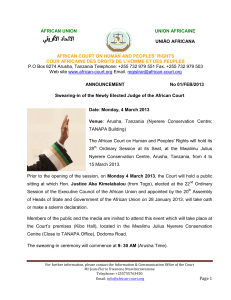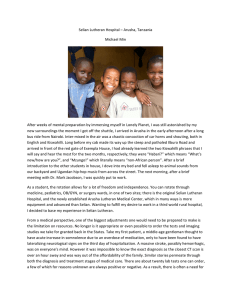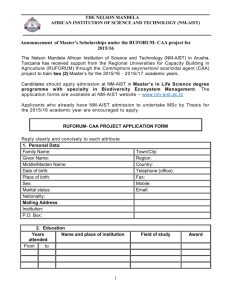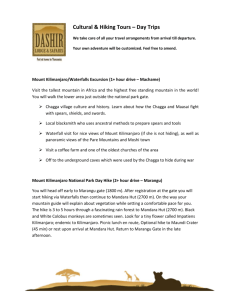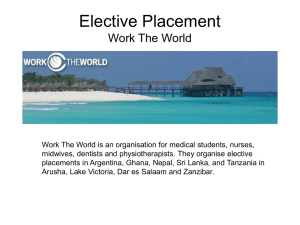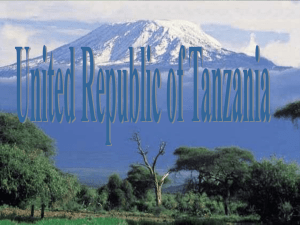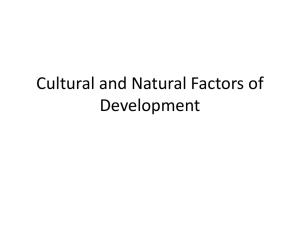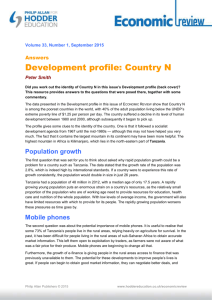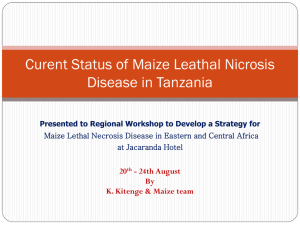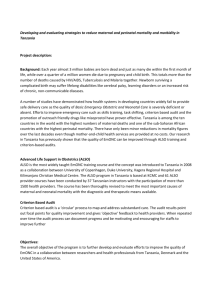Tanzania is an extraordinary land where visitors are welcomed with
advertisement
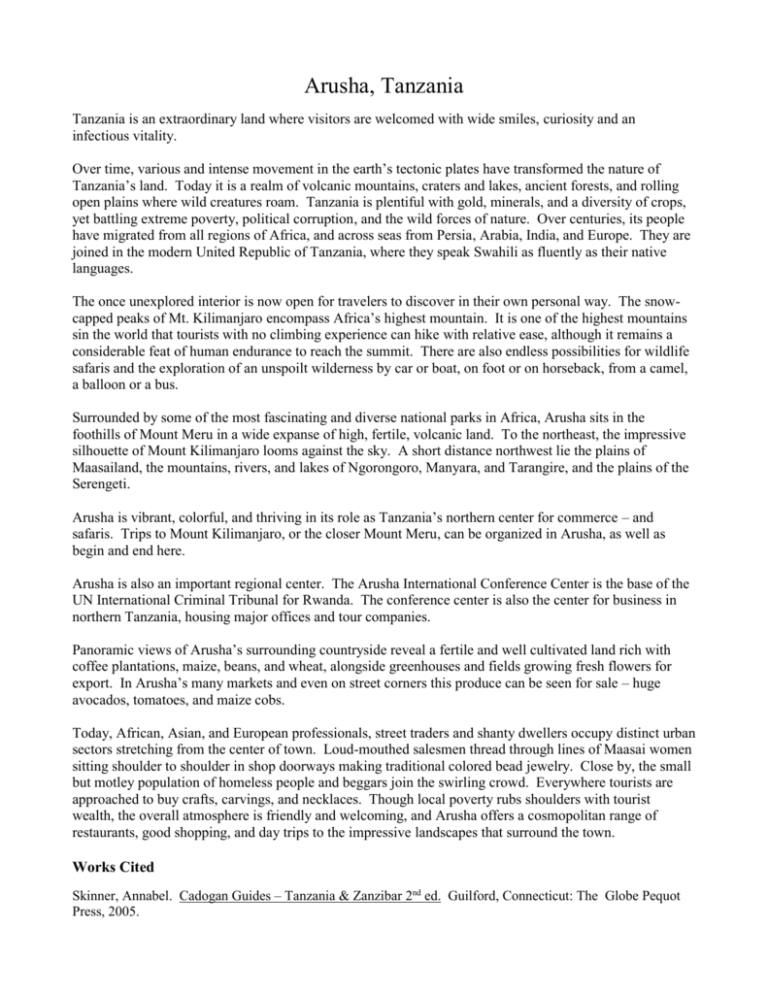
Arusha, Tanzania Tanzania is an extraordinary land where visitors are welcomed with wide smiles, curiosity and an infectious vitality. Over time, various and intense movement in the earth’s tectonic plates have transformed the nature of Tanzania’s land. Today it is a realm of volcanic mountains, craters and lakes, ancient forests, and rolling open plains where wild creatures roam. Tanzania is plentiful with gold, minerals, and a diversity of crops, yet battling extreme poverty, political corruption, and the wild forces of nature. Over centuries, its people have migrated from all regions of Africa, and across seas from Persia, Arabia, India, and Europe. They are joined in the modern United Republic of Tanzania, where they speak Swahili as fluently as their native languages. The once unexplored interior is now open for travelers to discover in their own personal way. The snowcapped peaks of Mt. Kilimanjaro encompass Africa’s highest mountain. It is one of the highest mountains sin the world that tourists with no climbing experience can hike with relative ease, although it remains a considerable feat of human endurance to reach the summit. There are also endless possibilities for wildlife safaris and the exploration of an unspoilt wilderness by car or boat, on foot or on horseback, from a camel, a balloon or a bus. Surrounded by some of the most fascinating and diverse national parks in Africa, Arusha sits in the foothills of Mount Meru in a wide expanse of high, fertile, volcanic land. To the northeast, the impressive silhouette of Mount Kilimanjaro looms against the sky. A short distance northwest lie the plains of Maasailand, the mountains, rivers, and lakes of Ngorongoro, Manyara, and Tarangire, and the plains of the Serengeti. Arusha is vibrant, colorful, and thriving in its role as Tanzania’s northern center for commerce – and safaris. Trips to Mount Kilimanjaro, or the closer Mount Meru, can be organized in Arusha, as well as begin and end here. Arusha is also an important regional center. The Arusha International Conference Center is the base of the UN International Criminal Tribunal for Rwanda. The conference center is also the center for business in northern Tanzania, housing major offices and tour companies. Panoramic views of Arusha’s surrounding countryside reveal a fertile and well cultivated land rich with coffee plantations, maize, beans, and wheat, alongside greenhouses and fields growing fresh flowers for export. In Arusha’s many markets and even on street corners this produce can be seen for sale – huge avocados, tomatoes, and maize cobs. Today, African, Asian, and European professionals, street traders and shanty dwellers occupy distinct urban sectors stretching from the center of town. Loud-mouthed salesmen thread through lines of Maasai women sitting shoulder to shoulder in shop doorways making traditional colored bead jewelry. Close by, the small but motley population of homeless people and beggars join the swirling crowd. Everywhere tourists are approached to buy crafts, carvings, and necklaces. Though local poverty rubs shoulders with tourist wealth, the overall atmosphere is friendly and welcoming, and Arusha offers a cosmopolitan range of restaurants, good shopping, and day trips to the impressive landscapes that surround the town. Works Cited Skinner, Annabel. Cadogan Guides – Tanzania & Zanzibar 2nd ed. Guilford, Connecticut: The Globe Pequot Press, 2005.
